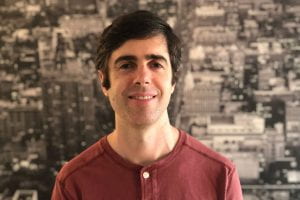By Ido Davidesco
As a neuroscience student, I studied how people recognize faces. I would present images of faces and other objects to research participants in the laboratory and then measure their brainwaves. I enjoyed my research, but something was missing.
Several years later, when I was at New York University, I shifted to a different type of neuroscience study. I was still focusing on brainwaves. But this time, I was looking at the brainwaves of students and teachers in classrooms.
My journey across disciplines (in my case, neuroscience and education) took me from the lab to the classroom. I was forced to ask new research questions and study them with new tools.
Let’s start with research questions. Instead of asking questions about how the brain recognizes faces, I became more interested in student learning and engagement. Have you ever watched a lecture when suddenly you realize that you have no idea what the instructor is talking about? What happens in the brain of students who are highly engaged or not engaged at all during a lesson?
To answer such questions, my colleagues and I needed new research tools. We could not bring a big, bulky brain scanner that costs over $1M into a classroom full of students. But, luckily, we were able to use low-cost, portable headsets to measure students’ brainwaves.
We used a technique called Electroencephalography (EEG). Researchers and doctors have used EEG to study brain waves for decades. However, only recently has it become possible to measure people’s brainwaves outside of the laboratory, in real-world spaces like classrooms.
Researchers working in classrooms face many challenges. For example, we only had 45 minutes of class time to set up all the equipment and collect data, there were announcements on the school PA system in the background, and, of course, the teacher had to get through their lesson plan while we were fiddling with malfunctioning EEG headsets.
But, despite the interference of the PA system, we captured some interesting results.
Our data suggested that we can tell how engaged students are based on the similarity of their brainwaves: students who were more engaged showed more similar brainwaves to other students in the classroom.
This neuroscience study in classrooms opened the door to new collaborations with different disciplines, such as Discipline-Based Education Research or DBER. I started working with education researchers to learn about the design of classroom-based studies. I also realized that teachers can use EEG and started working with high school teachers and students on developing a new neuroscience high school curriculum.
Ultimately, this journey took me back to the lab. The classroom study led to many new research questions: How does similarity in brainwaves relate to learning? Do students learn better when their brains are “in sync”? And do students still show similar brain activity when they are in virtual classrooms?
I realized that some of these research questions can be better addressed in the laboratory, rather than a classroom, because of the ability to better control the environment and collect more data. But I suspect that these laboratory studies will ultimately lead to more research in classrooms.
So what have I learned through this journey so far? Conducting research in schools can be challenging, but, at the same time, very fulfilling. I have learned from the teachers and students that I have worked with and from my research collaborators who all come from different fields. This has not always been an easy journey, but I am excited about the opportunities that lie ahead!
About the Author:

Ido Davidesco, Ph.D., is an Assistant Professor of Learning Sciences at the University of Connecticut’s Neag School of Education, where he directs the Lab-to-Classroom research group. He received a Ph.D. in cognitive neuroscience from the Hebrew University of Jerusalem, Israel, and completed postdoctoral training at Princeton University and New York University. Dr. Davidesco is the recipient of the Next Generation Award from the Society for Neuroscience and an early career award from the National Science Foundation. @IdoDavidesco

Thank you sharing your journery